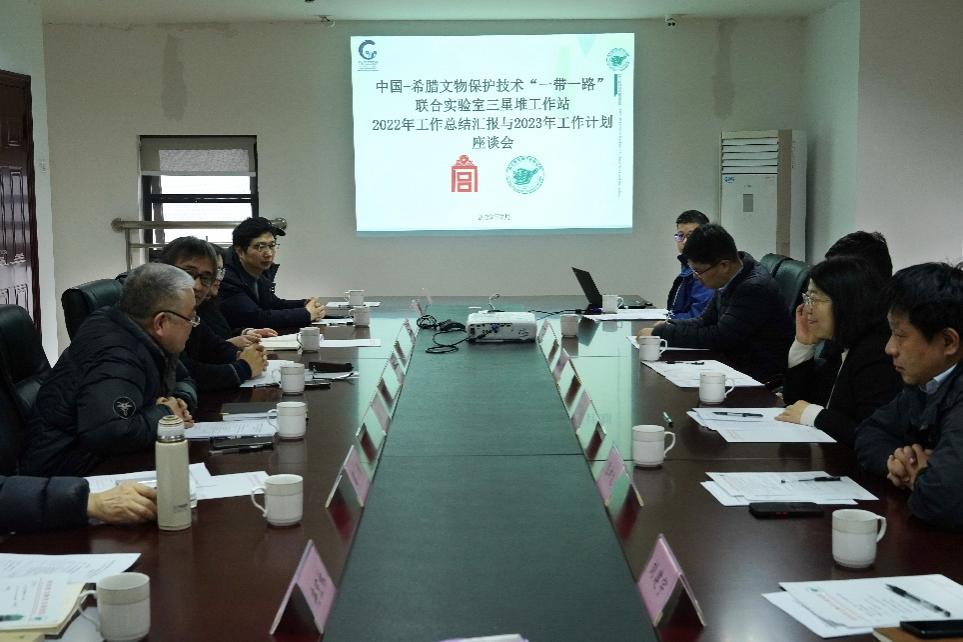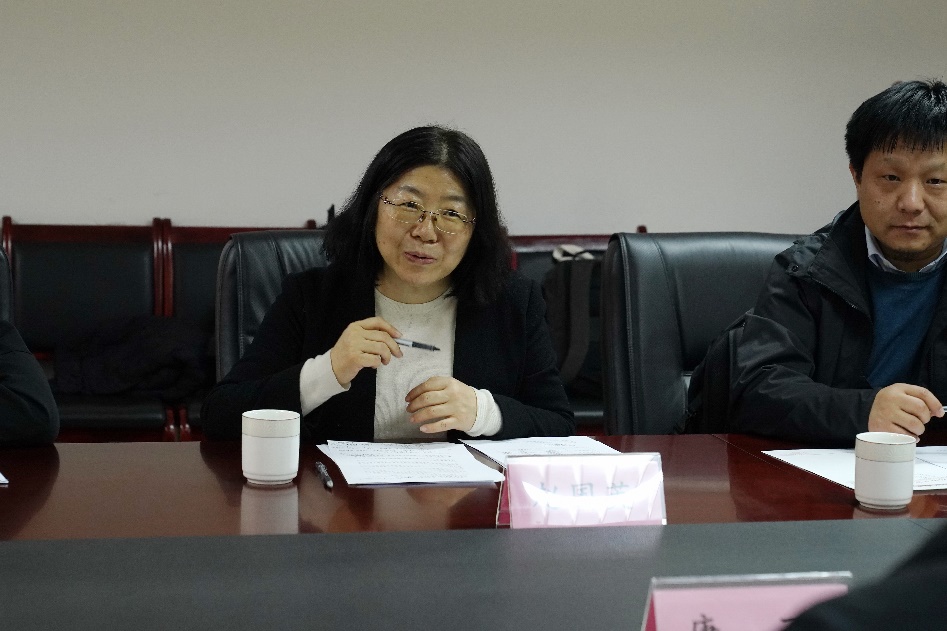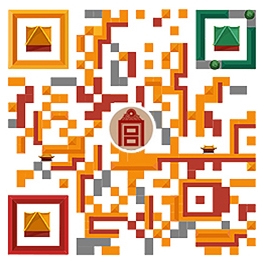On 7 February 2023, Sanxingdui Workstation of the China-Greece Belt-and-Road Joint Laboratory on Cultural Heritage Conservation Technology (Joint Laboratory) successfully held its annual work-summary meeting for 2022 at Guanghan Archaeological Base of Sichuan Provincial Cultural Relics and Archaeology Research Institute.
The meeting chiefly summarised the development of the Joint Laboratory’s Sanxingdui Workstation and reported on the workstation’s scientific-research results from 2022. It also discussed the work direction and key tasks of the workstation in 2023. Tang Fei, director of Sichuan Provincial Cultural Relics and Archaeology Research Institute, which supports the workstation, chaired the meeting, which was attended by Zhao Guoying, director of the Joint Laboratory and deputy curator of the Palace Museum; Chen Kunlong, professor at the Institute of Cultural Heritage and History of Science & Technology, a unit co-established by the Joint Laboratory at the University of Science and Technology Beijing; experts and scholars from Sichuan Provincial Cultural Heritage Administration and related units; and staff from the workstation.

The annual work-summary meeting for 2022 of the Joint Laboratory’s Sanxingdui Workstation.
Representatives of staff from the workstation gave a report on their work in 2022 and presented the collaborative-research results, which covered the excavated bronze ware’s preservation assessment, value recognition and conservation. They summed up how different preservation environments, such as being half-exposed or fully buried, at excavation sites affect the corrosion of the excavated bronze ware based on the online monitoring of electrochemical information. They also provided solid scientific data for research on Ba Culture in east Sichuan with their research on bronze ware and glassware excavated from the Chengba and Luojiaba remains, which included research on their production techniques, composition, tin-plating techniques and mineral-material sources.
In addition, they have researched and digitised the preservation of bronze ware excavated from the sacrificial area of the Sanxingdui remains and conserved bronze ware excavated from the Chengba remains.

Director Tang chaired the meeting and made a speech.
Director Tang fully recognised the development and research of the workstation and suggested it should strengthen its research collaboration with staff working at archaeological sites, so as to encourage the international publication, promotion and application of their results.

Zhao, deputy curator of the Palace Museum, made a speech at the meeting.
Deputy Curator Zhao spoke highly of the workstation’s work. In addition to providing scientific data for value recognition of bronze ware excavated from Bashu area (present-day Sichuan Basin and surrounding area), the research laid the scientific basis for the formulation of a protection plan for bronze ware at excavation sites.
Zhao also pointed out that the Palace Museum has a large collection of bronze ware and that the museum should step up its collaboration with Sichuan Provincial Cultural Relics and Archaeology Research Institute in the research and preservation of bronze ware.
Following some animated discussions, the meeting laid out the following points for the workstation’s work in 2023: Firstly, supported by the Joint Laboratory, interdisciplinary collaboration and close collaboration with relevant research institutes will continue to take place. Meanwhile, joint research on innovative technology for the preservation of bronze ware from Bashu area will be carried out, top-flight talent for metallurgical archaeology trained and a talent team for preservation and conservation built. Secondly, plans will be scientifically executed to achieve individual breakthroughs. The three sides will continue the research on bronze ware from Sanxingdui, Chengba and Luojiaba – with the hope of achieving breakthroughs in the research on the casting techniques and the mineral resources of the places of production, so the scientific data may become direct evidence for the interpretation of Sanxingdui and Bashu cultures. Thirdly, the research results will be transformed into academic papers and research reports as soon as possible for publication. When the opportunity arises, joint exhibitions can be held for the achievements of artefact preservation and conservation. Fourthly, as an international exchange platform, the Joint Laboratory should be taken advantage of to strengthen the academic exchanges and talent cultivation among the Belt-and-Road countries, so that a better scientific-research platform may be created and innovative developments achieved as China goes global and opens itself up internationally.







